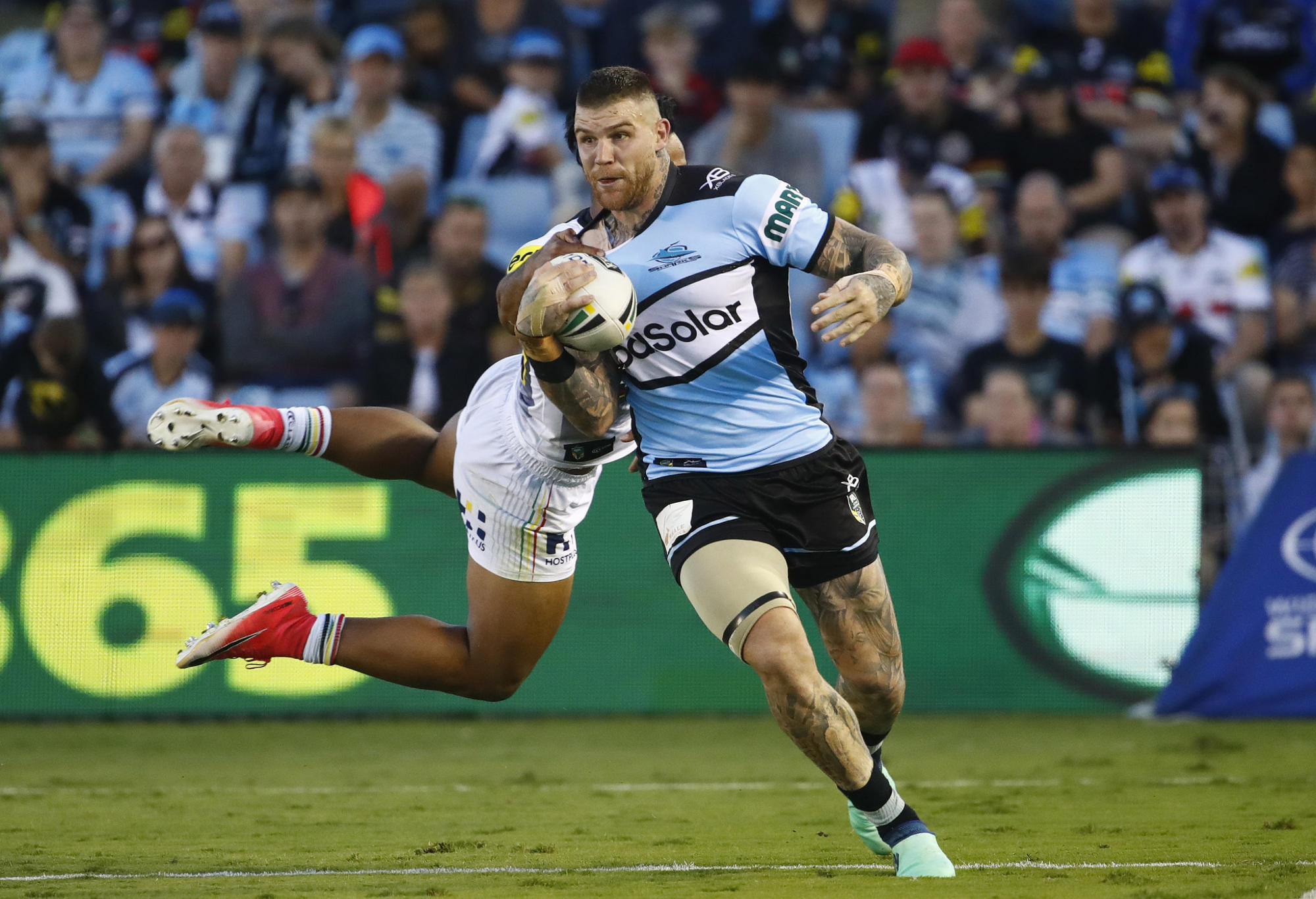Sharks too smart in the wet for hot-and-cold Dragons to make an unhappy homecoming for Flanagan
To paraphrase Bill Woodfull, there were two teams out there at Shark Park on Sunday but only one of them was playing wet-weather footy.…
Latrell Mitchell’s season 2018 should be finished.
But thanks to a grading from the NRL match review committee that’s best described as ‘generous’, he’ll only miss the Roosters’ preliminary final against either Souths or St George Illawarra in a fortnight.
Mitchell should be counting his lucky stars that this happened during the finals, hence he was conveniently charged with Grade 1 “dangerous contact with the head/neck”.
That low grading meant Mitchell couldn’t miss more than one game no matter what happened at the judiciary, so the Roosters were more than happy to waste theirs and everyone else’s time on the slim chance he could get off.
So the NSW Origin centre was only ever at risk of missing one match for a tackle that was dangerous, reckless, obviously caused pain, and was millimetres from becoming catastrophic. Why?
The crusher is one of the most dangerous tackling methods in the game and whether it’s done with driving force or very little force, the potential for damage to a player’s neck is huge.
That’s why I don’t use the word ‘catastrophic’ lightly – Mitchell dropped like a stone with one arm around Dugan’s neck and another under his left arm.

Latrell Mitchell of the Roosters (Photo by Jason McCawley/Getty Images)
In defending himself, Mitchell told the judiciary panel he didn’t execute the tackle the way he’d intended.
“Josh Dugan is a big man who is strong and powerful. I wanted to be dominant in my tackle. He was going to run hard and I had to be steely. I tried to be dominant but also look after him and get him on his back for a slower play the ball,” he said.
“I felt I was courteous of his neck and left a space for him to fall through.
“There was always care there for my opponent. I was trying to stay tight. (But) I could have been more courteous with the way he went through.”
Did Dugan play it up? Who knows. He played the full 80 but clearly appeared to be in discomfort at the time, and he’s had a history of neck issues. Having said that, the Sharks centre is hardly reputed as a man of steel.
Trent Robinson certainly thought a penalty was being milked, indicating in his post-game comments that he thought Dugan was laying down.
“If they’re going to go off then fine but you can play for penalties at different times as well, so that’s up to someone else (to decide),” the Roosters coach said.
The kicker here though is that immediately after the tackle was completed, Mitchell grabbed Dugan by the jersey and tried to drag him to his feet as he lay there grabbing the back of his neck.
That shows one of two things: either Mitchell thinks Dugan was bunging it on, or he knows he’s got the tackle wrong and is trying to get Dugan up and moving quickly to show the referee all is OK and there’s nothing to see here. History shows it was the latter.
A tackler’s ‘intent’ in these situations is completely irrelevant – every player goes into a tackle to neutralise their opponent (and sneak a couple of extra seconds to set the defence).
No player in the NRL goes into a tackle intending to cause serious injury to his opponent. We understand that tackles go wrong dozens of times every game. But when it comes to a player’s neck, the potential consequences of a tackle going wrong are much, much worse.
Mitchell put Dugan into a highly dangerous position whether he meant to or not. That’s the outcome every time a tackler tries to drag down his man high from behind because the range of motion and options for a safe landing are both very limited.

Joshua Dugan of the Sharks. (AAP Image/Daniel Munoz)
The instant Mitchell left his feet he was no longer in control of what happened next, especially with Jake Friend and Luke Keary also involved in the tackle.
Melbourne Storm centre Will Chambers copped a three-week ban for a similar tackle on Parramatta’s Jarryd Hayne which drew a Grade 3 charge.
People are arguing Chambers used more force in his tackle, but Hayne was uninjured and played the full 80 minutes, as Dugan did against the Roosters.
So what sets them apart? Why is one worth three weeks and the other one week?
Is the only difference between the two tackles the time of the year when it happened?
Because you can guarantee if Mitchell’s tackle on Dugan happened in Round 14 of the regular season he would have copped a tougher penalty.
It truly is an NRL finals miracle.
As Mitchell touched on in his comments to the judiciary, NRL players understand their duty of care to their opponent. They demonstrate it constantly throughout the 80 minutes.
But where is the NRL’s duty of care to the game of rugby league, to get rid of the crusher tackle for good?